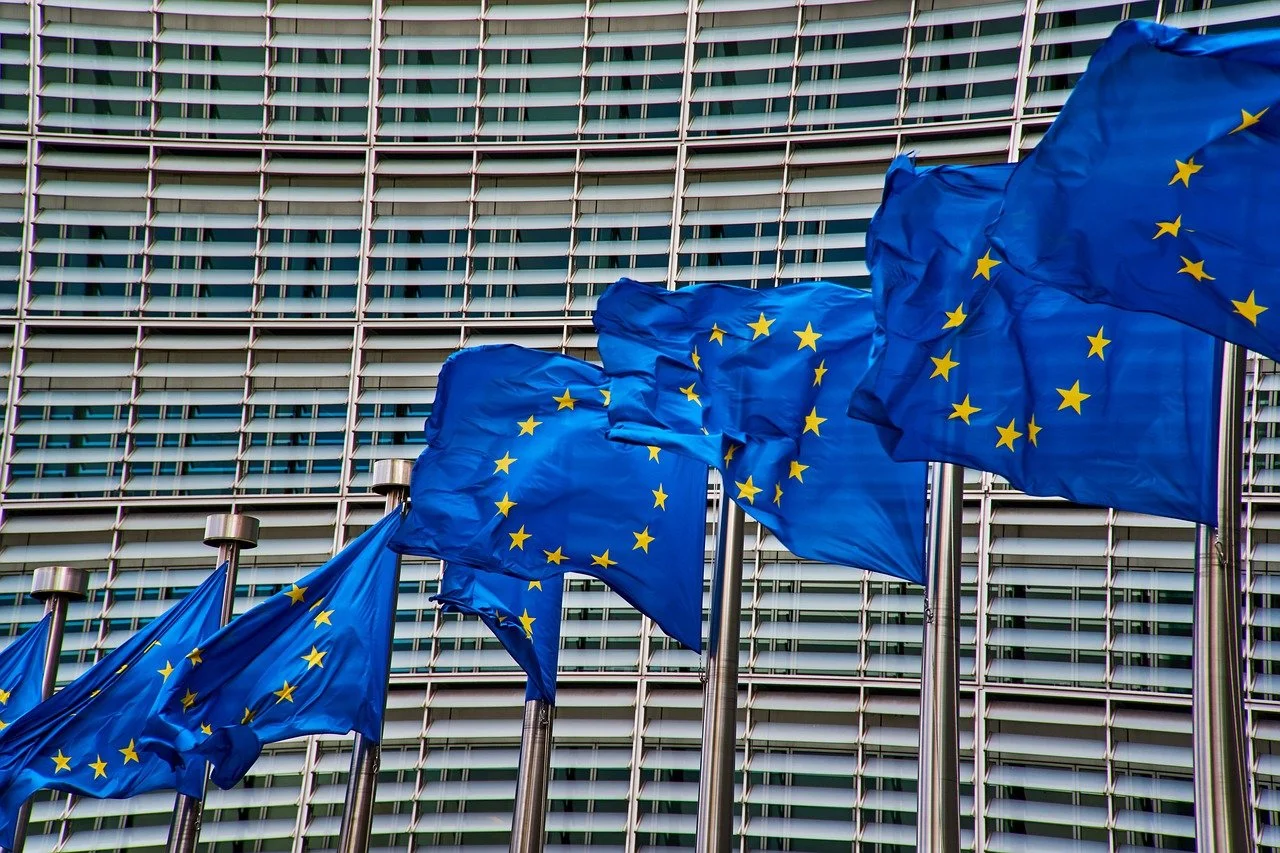
A Sustainable Transport Investment Plan (STIP) to decarbonise maritime and aviation
Position paper | July 2025
Introduction
2025 is an important year for aviation and maritime decarbonisation. Renewable hydrogen e-fuels offer the most effective pathway to decarbonising both of these sectors. If these projects are to be operating ahead of the 2030 target for ReFuelEU Aviation and 2030s targets for FuelEU Maritime, projects need to be reaching Final investment decision (FID) in the coming year. Financing and de-risking therefore needs to be accelerated now.
The STIP offers an opportunity to address this and must be targeted towards renewable hydrogen projects. The STIP has the potential to transform the EU’s e-fuel market, driving decarbonisation, competitiveness and innovation by:
Implementing a contracts for difference (CfD) financing mechanism for aviation and maritime e-fuels (double-sided auctioning).
Introducing a time-bound book-and-claim flexibility mechanism for aviation e-kerosene in the EEA.
Supporting the development and adoption of zero-carbon emission technologies by investing in hydrogen infrastructure in airports and use of green public service obligation (PSO) routes.
Encouraging the expansion of the EU ETS to maximise available funds.
What is the Sustainable Transport Investment Plan (STIP)?
The Sustainable Transport Investment Plan (STIP) was announced in the Clean Industrial Deal (CID) published earlier this year, which mentioned “short and medium-term measures to prioritise support to specific renewable and low-carbon fuels for aviation and waterborne transport”. We welcome that the call for evidence recognises the critical need for greater financing for, and de-risking of, investments into the production of renewable hydrogen solutions for shipping and aviation. In particular, we are pleased to see the update that the plan will assess the need for new mechanisms to achieve this, such as contracts-for-difference and double-sided-auctions.
Both synthetic fuels (or ‘e-fuels’) – produced using renewable hydrogen – and zero carbon emission technologies such as aircraft and vessels powered by renewable hydrogen fuel cells present the only credible pathways to net zero for aviation and maritime. Only a small number of maritime e-fuel projects, and no large-scale aviation e-fuel projects, have reached final investment decision (FID), despite the number of projects underway in the EU having capacity to meet the quantities mandated in ReFuelEU Aviation and FuelEU Maritime.
An ambitious STIP that supports the growth of Europe’s renewable hydrogen fuels sector is therefore vital to decarbonising aviation and shipping, reducing oil dependency and cultivating these sectors’ long-term competitiveness in Europe.
What should the STIP target?
Funds allocated via the STIP will be most effective when reserved for renewable hydrogen solutions and should not be allocated to biofuels. There are a number of pathways to cut shipping and aviation emissions, with some less effective than others.
Renewable hydrogen solutions offer a far greater market opportunity than waste-based biofuels in the medium to long term. This is due to e-fuels and renewable hydrogen-powered aircraft costs trending downwards over time, and fewer constraints on scaling production. Between the economic and environmental opportunities renewable hydrogen solutions offer, the steep challenges of scaling and commercialising a nascent technology and fierce competition with incumbent fossil- and biofuels, it is this industry that must be targeted to optimise the use of funds.
Biofuels, on the other hand, have less potential to reduce shipping and aviation lifecycle emissions than e-fuels, and risk impacting biodiversity. Beyond their environmental limitations, biofuels have greater technical readiness and are available today and are therefore less in need of support to boost production. Furthermore, significant projected supply constraints as demand grows means they do not offer industry economic sustainability and resilience in the long run, even if they are cost competitive today, and risk channelling funds into projects that could become stranded assets in the future.
Zero carbon emission technologies – like hydrogen combustion or fuel cell vessels and aircraft – have to date been overlooked by policy and regulation due to the nascency of the technologies. The STIP provides an opportunity to redress this imbalance between policy that drives the uptake of alternative fuels, and that which incentivises zero carbon emission technologies by laying out the foundations for building a European market for these solutions. Reviewing how PSO routes can support zero-carbon emission flight innovation, and incentivising the deployment of hydrogen infrastructure in airports and ports, will be central to achieving this. Now is the time to do so, with no nations appearing as clear winners in developing the technologies of the future. This presents an opportunity for Europe to lead in getting truly clean maritime and aviation technologies to the market.
What instruments should the STIP include?
The STIP should support renewable hydrogen solutions for shipping and aviation by introducing:
Financing: A contracts for difference (CfD) scheme for EU-produced maritime and aviation e-fuels must be implemented and designed to address two barriers to investment – 1) the cost differential between e-fuels and conventional fuels and 2) disparity between the short contract lengths offered by offtakers and the longer ones required by producers. The STIP should include a CfD scheme backed by a market intermediary with a double-sided auctioning system, as broadly supported by prominent aviation voices.
Flexibility: A limited book-and-claim system for e-kerosene would provide the flexibility to de-risk investment into e-kerosene production and help kickstart the market in Europe. Being able to sell physical e-kerosene and its green credentials separately would expand market access for producers, reduce e-fuel transport costs and emissions, and create financial certainty for investors to take final investment decisions. To ensure it achieves its purpose of supporting EU climate goals, competitiveness and energy security, this mechanism must meet the three conditions that it:
a. Is only for e-kerosene;b. Operates only within the EEA;
c. Is time bound.
Support for zero-carbon emission technologies: to address the infrastructural barriers to the widespread adoption of zero-carbon emission aircraft and vessels, the STIP must lay out an approach to encourage investment into hydrogen infrastructure in airport and ports through a commitment to revise the Alternative Fuel Infrastructure Regulation to mandate hydrogen infrastructure at ports and airports. The STIP could also consider how existing funding mechanisms, such as the Innovation Fund, can be used to direct investment to airport and port hydrogen demonstrations.
For zero-carbon emission aviation, the STIP should further consider how PSO routes can be utilised as effective testbeds for these technologies, while also sustaining regional connectivity. Revision of Regulation 1008/2008 on rules for operation of air services, for example, could be considered to include a requirement for environmental considerations to be taken into account for PSO tenders. An additional funding stream to support green PSOs should also be considered.
Where should the money come from?
It is understood that the STIP won’t include new revenue streams. However, it remains important that the aviation and maritime industries pay for their emissions under the polluter pays principle.
The ETS is the main existing mechanism for making industry pay for its pollution. It currently covers all emissions from intra-EEA flights (plus the UK and Switzerland) and maritime voyages both within the EU and 50% of emissions from international maritime journeys for vessels over 5.000 gross tonnage (GT). Member States are obliged to use ETS revenues for climate action, and the Commission has specifically reinforced that 50% of its aviation revenues should fund decarbonising aviation.
The current ETS scope is insufficient for both fairly pricing all shipping and aviation emissions to incentivise reductions and providing a revenue stream to fund decarbonisation. The EU ETS must be extended to cover:
Extra-EEA aviation emissions, and;
Maritime emissions from vessels between 400 and 5.000 GT.
International collaboration
International organisations such as the International Maritime Organization (IMO) and International Civil Aviation Organization (ICAO) are developing their own frameworks that take a global approach to governing shipping and aviation’s emissions. With important decisions to be made at the IMO in the coming year to further influence the development of the Net Zero Framework, it is important that the STIP backs up action taken at home by outlining the need for an IMO framework that incentivises the lowest emission solutions.
Alongside reviewing the effectiveness of CORSIA (the ICAO’s market-based measure for reducing CO2 emissions from international flights) as part of the upcoming decision on including international aviation emissions in the scope of the EU ETS, the STIP must also commit to Europe leading from the front in strengthening the ICAO’s approach to regulating international aviation emissions. The EU ETS provides a leading example of how such schemes can be effectively implemented by operating a fixed, gradually reducing cap on emissions allowances. Currently, CORSIA is undermined by the structural flaw of requiring emissions to only be partially offset.
The EU has long shown ambition at both the IMO and ICAO, most recently demonstrated by its support for IMO introduction of a universal greenhouse gas (GHG) levy and stringent fuel standard in April’s meeting. This ambition must be retained, backed by effective policies at home to drive deep aviation and shipping decarbonisation.

